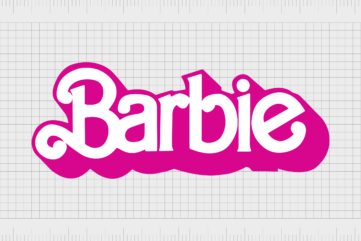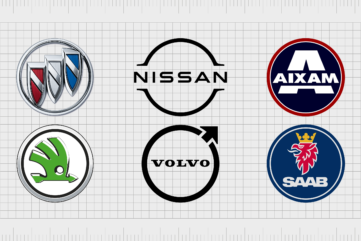The meaning of brand authenticity: What it is, why it’s important and how to build it (tips for success)

Brand authenticity isn’t a new concept. Consumers has always shown more support for companies they believe to be honest and trustworthy. After all, who would willingly buy anything from a business that never delivers on its promises?
However, in recent years, demand for authentic branding has increased. Part of the reason for this is that consumers today are experts at recognizing disingenuous brands. The digital age makes it easier than ever for people to analyze a company’s claims and reputation.
At the same time, countless stories about deceitful brands, acting without ethics, stealing data, or outright lying to consumers has led to diminished trust between companies and consumers.
While 60% of consumers believe trustworthiness and transparency are the most important traits a brand can have, many think organizations don’t have their best interests at heart.
The good news? Investing in brand authenticity is one of the best ways to differentiate your brand from competitors, elevate your marketing strategies, and increase customer loyalty.
Here’s how you can build a genuinely authentic brand.

What is brand authenticity? Brand authenticity meaning
Brand authenticity definition: The degree to which a company’s marketing and messaging align with the reality of its services, products, and actions.
Authentic branding is simple enough to understand. Authentic brands are honest. Everything they do and say aligns with the core values, mission statement, and vision they share with their audience.
While any company can tell customers that it’s committed to addressing social issues, supporting its community, or protecting the environment, authentic brands do more than “talk the talk”. They actively deliver on their promises, creating a brand image routed in reality.
In the past, authenticity wasn’t as common as you’d think. Aspirational and idealized marketing campaigns were everywhere. Countless companies promised their consumers the world to make a profit, and failed to live up to expectations.
While older generations of customers expected a level of “hyperbole” from businesses, today’s consumers won’t accept anything less than the full truth. The most successful brands now have to cultivate good relationships with their customers, by being completely honest.
On the other hand, companies that fail to deliver authentic messaging are constantly called out by consumers on social media, and other industry leaders.

The importance of brand authenticity
Your brand’s authenticity is essential to its success. More than ever before, consumers are looking for genuine connections with companies, built on mutual trust. 90% of consumers say they look for authenticity in the brands they support, and they’ll abandon any business that doesn’t deliver.
The importance of authenticity has only grown more significant as levels of brand trust have declined, exacerbated by the age of social media, and more ethically conscious consumers.
In the past, building brand loyalty was as simple as creating a good product and delivering it at a reasonable price point. Now, 64% of customers will only buy from a company they believe share their values, and demonstrate a commitment to actively making the world a better place.
Consumers are beginning to define themselves with the brands they buy from. Every product or service they purchase is a reflection not just of their needs, but their quest to improve the world.
When customers buy fashion products from Patagonia, beauty products from Lush, and cars from Tesla, they elevate their own personal brand, showing their community what they stand for.
As a result, your commitment to authentic branding determines not only whether you’ll capture the attention of the right audience, but whether you’ll generate loyal customers, willing to advocate for, and support your company.

The authenticity trend: Growing demand for brand authenticity
As mentioned above, while brand authenticity has often been important to many consumers, it’s quickly becoming the most important factor in business success. New generations of buyers are shaping the future of every industry.
Today’s companies are appealing to younger, more socially conscious consumers. Millennials are one of the most educated and productive generations in history, but they’re also among the most skeptical. They’ve struggled through economic turmoil, and are searching for empathetic companies.
Similarly, Gen Z, the youngest generation of current buyers, value individual expression and authenticity more than most. They’re tired of inauthentic content, and as the first truly digital generation, they know how to seek out authentic experiences and relationships.
They look for companies that use real people in their advertising, and prioritize organizations that take an active approach to improving the world.
As new generations continue to champion reality and honesty in everything from traditional marketing campaigns to social media posts, fake brands are falling out of favor. Companies can either adapt to the age of authenticity, or die.

What makes a brand authentic?
So, what makes a brand authentic? The simple answer is “being genuine”. Creating authentic content, delivering on your promises, and committing to transparent communication all demonstrate authenticity. However, there are more factors to authenticity than most companies realize.
Here are some of the key components of a genuinely authentic brand:
Consistency
A brand can’t be seen as authentic if it’s constantly changing its messaging, tone of voice, and personality. The most successful brands today carefully craft an identity that resonates with their target audience, and avoid any unnecessary changes.
These brands ensure their brand storytelling, content, and even the marketing efforts they invest in all align with their values and vision without disruption.
Transparency
Honesty, transparency, and authenticity are all connected. In today’s digital world, consumers expect companies to be straightforward and clear about their actions. They expect your business to not only share insights into your successes and values, but also your shortcomings.
Authentic brands use storytelling to introduce consumers to their journey, and keep them informed about how the organization has grown and changed over the years. They own up to their mistakes, apologize to customers when necessary, and avoid keeping buyers in the dark.
Customer centricity
Consumers know every company wants to make a profit. However, they expect businesses today to focus on more than just financial gain. Modern customers want to see evidence that the brands they’re buying from put their needs, and the needs of humanity first.
Companies that actively listen and respond to customer feedback, deliver an excellent customer experience, and commit to delivering exceptional quality in their products are seen as more authentic.
Purpose
Take a moment to think about all of your favorite brands. Most of these companies have a mission statement or vision that goes beyond simply “making money”. Lush wants to fight back against animal testing, Coca-Cola wants to spread joy through the world.
A clear purpose or vision that drives your business gives your consumers something to resonate with. It helps build connections on an emotional level, and drives advocacy.
Quality
As mentioned above, a quality product is a crucial part of building brand authenticity. The only way to thrive in today’s competitive world is to actively produce solutions that address your customer’s pain points. This means investing in building high-quality products or services.
Companies that cut corners, purchasing cheaper materials, or using unethical production processes lose the trust of their consumers.

How to create an authentic brand strategy
On the surface, demonstrating brand authenticity seems like a simple practice. All you really need to do is tell the truth, and be transparent about your business practices.
However, building deeper connections with your audience takes a little more work. You need to ensure you’re not just being “honest”, but also that you’re demonstrating the values and behaviors your customers crave and appreciate.
Step 1: Get to know your audience
A brand authenticity strategy works best when it’s combined with a customer-centric approach to business. Technically, you could tell your audience that you just want to make more money than your competitors without being inauthentic. However, that won’t earn their loyalty.
With this in mind, it’s important to build your authentic brand story around what you know about your target audience. Getting to know your customers, their pain points, expectations, goals, and even the language they use will help you create more authentic, engaging marketing campaigns.
You can use your knowledge of your customers to find out which social cause you should take a stand for, how you should demonstrate social responsibility, and which values you should demonstrate.
Are your customers obsessed with sustainability? Do they care about ESG initiatives, and ethical workplace practices? Do they value innovation?
Step 2: Commit to being real
Brands that are authentic are committed to being real with their customers. They know hyperbolic marketing statements and lofty claims won’t earn them a good reputation.
Instead, they focus on basing their promises in reality. This may seem simple, but in a competitive world, it’s easy to start promising things your company can’t live up to. For instance, you might say your company sells the “best coffee in the world”, but can you back that up?
Think about what drives your organization, what your purpose is, and what you stand for, then consider how you can realistically communicate with your customers. Every claim you make should be something you’re capable of living up to, or you’ll lose your customer’s trust.
Step 3: Know when to take a stand
For years now, consumers have shown a clear preference for companies who take a stand on social, cultural, political, and environmental issues that are close to their hearts. Showing you value the same things as your target audience helps build affinity with your customers.
However, it’s important to know when you should take a stance, and when you should sit back. Making bold statements about every social issue, just to generate brand awareness is inauthentic.
You can’t promise to fight for every social cause, without failing to live up to consumers’ expectations. So, decide in advance what you’re really going to stand for, and how you’re going to act. At the same time, be prepared for controversy.
While taking a stance on certain topics might delight some customers, it will alienate others. Just look at Gilette, a company that got backlash and boycotts after taking a stand against toxic masculinity.
Step 4: Get the whole business involved
It’s difficult to create a consistent brand image if all of your team members have different ideas about what your business should stand for. Your employer brand and corporate brand need to be aligned so you can build authentic relationships with your customers.
Start with the CEO and executive leaders in your team. They should be fully committed to supporting your business whenever you take a stance on crucial topics. One study even found 92% of consumers believe CEOs should lead and speak out on issues.
Next, ensure all of your employees are clear on your brand values and purpose. Make sure they know how to communicate with customers, and how to represent your company. This will ensure a more consistent image on all of your sales, service, and marketing channels.
Step 5: Create and share authentic content
Content isn’t just the key to developing a strong brand or marketing strategy. It’s also crucial to showcasing your company’s values and vision to your target audience. You can increase the authenticity of your content in a variety of ways.
For instance, creating thought leadership content that shares opinions and genuine insights into your industry and social topics is a good start. Responding to the comments consumers make about your brand with the help of social listening tools is another great step.
Perhaps the most valuable marketing tool of all for companies creating authentic content, however, is user-generated content. Images, reviews, testimonials, and social posts shared by your customers are more impactful than any other content you can create.
Studies have even found that customers are 2.4 times more likely to believe user-generated content is authentic and real.
Step 6: Always be consistent
As mentioned above, consistency is one of the most important factors in building an authentic brand. Unfortunately, it’s harder to maintain consistency than you might think. Companies naturally change and evolve over time, changing their branding, their stance, and even their logos.
However, the core elements of your identity should remain the same. Your values need to be shown through in everything you do as company. Your marketing messages should use the same tone of voice on every channel. The products you create should demonstrate consistent quality.
If you do need to make a major change, be honest and transparent with your consumers about why you’re evolving. Communicate with your audience every time you adjust your product line, your sales strategy, and even your pricing.
Examples of brand authenticity to learn from
As brand authenticity has grown more crucial to business success over the years, countless companies have adopted a more “genuine” approach to marketing.
There are plenty of great examples out there, from Brewdog with its carbon neutral approach to product development, to McDonalds, and its evolving focus on sharing transparent insights into its supply chain and products.
Here are some great authentic brand examples to inspire you.

1. Aerie and #ArieREAL
American Eagle’s sub-brand, Aerie, wanted to capture the attention of younger customers, searching for authentic, honest, and responsible brands. They knew to do this, they needed to take a different approach with their marketing campaigns.
This inspired the creation of the #AerieREAL strategy – a campaign that continues to deliver success for the business today. The company promised to stop using supermodels on their product pages, and start showcasing real people instead.
This strategy has expanded over the years, to include authentic content on social media, and marketing campaigns built around promoting important topics, like the fight against eating disorders.
Aerie even showcases its commitment to genuine advertising on its website, where it showcases content from its customers (Aerie Fam), and promotes the Aerie Real Foundation.

2. Nike – Standing up for a cause
Nike is one of the most successful apparel brands in the world. It’s success doesn’t just stem from its amazing products, but from it’s consistent commitment to standing up for the right causes.
When Colin Kaepernick, an NFL player, lost his career in 2016 after he refused to stand and show pride for his country during the national anthem at a game. His actions were in protest against the social injustices against black people in the United States.
Nike decided to support Colin, creating a comprehensive marketing campaign, and even partnering with the athlete on a new product collection.
The strategy created a lot of controversy, with some consumers even burning Nike products in protest. But the company remained strong, refusing to back down, despite boycotting and anger.
The actions of Nike helped to spur a global revolution, with more companies following suit and taking a stand against social injustice.
Nike proved that brand authenticity isn’t always easy, but it’s crucial to making a stronger connection with your audience, and differentiating your brand.

3. Dove – Inspiring confidence
Dove is one of the most authentic brands in the modern world, and also one of the most popular as a result. For years, the company has shown its mission to inspire confidence in women and consumers around the world is more than just talk.
Countless campaigns, from the Dove self-esteem project to the Real Beauty campaign in 2014, have captured the attention of people worldwide.
To this day, Dove continues to invest heavily in branding and marketing campaigns that demonstrate its commitment to empowering people. In 2023, the company launched the #ShowUs campaign, to help ensure women of all cultures and backgrounds feel represented in modern media.
They also created the #NoLikesNeeded campaign, to remind younger consumers that there’s more to life than getting attention on social media.
These campaigns are constantly backed up by a slew of content on Dove’s website, discussing real issues linked to body confidence, self-esteem, and misrepresentation.
The power of authentic branding
Brand authenticity is more than just a trend in today’s world. Consumers want authenticity. They want to support companies that deliver on their promises, act with integrity, and act like real human beings.
As countless successful brands, from Patagonia, to Nike show us, taking a stance, constantly demonstrating the right values, and being real with your customers pays dividends. It builds trust with your target audience, ensuring they become loyal advocates for your company.
Additionally, authenticity protects your business from countless problems, both with your reputation and your finances.
As the world continues to evolve, buyer preferences, products, and even the economic environment may change. However, one thing will remain consistent. Customers will always support and champion brands that behave in a genuine, authentic manner.
Your brand equity, and your chances of growth, depend almost entirely on your ability to build a genuine relationship with your customers. So, ask yourself, is your brand truly authentic?
Fabrik: A branding agency for our times.
















